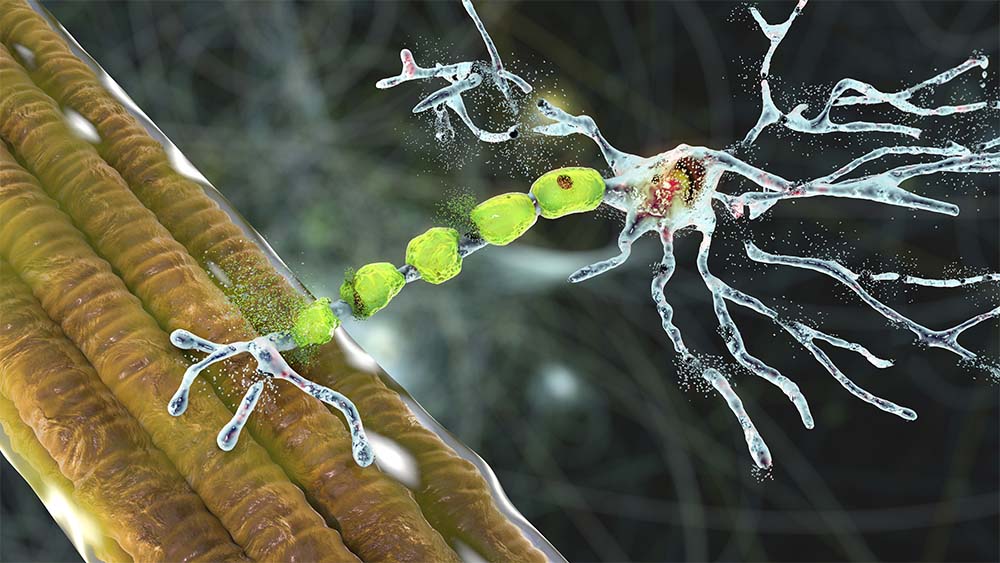
Alzheimer’s disease (AD) is a progressive neurodegenerative disorder characterized by cognitive decline, memory loss, and behavioral changes. While much of the research on Alzheimer’s has focused on amyloid plaques and neurofibrillary tangles, recent studies have highlighted the critical role of myelin and white matter plasticity in the pathogenesis and progression of the disease. This blog post delves into the significance of myelin and white matter, their involvement in Alzheimer’s disease, and the potential implications for treatment and prevention.
Understanding Myelin and White Matter
What is Myelin?
Myelin is a lipid-rich substance that forms a sheath around the axons of neurons. This myelin sheath is essential for the efficient transmission of electrical impulses along nerve cells. Produced by oligodendrocytes in the central nervous system, myelin enables rapid signal conduction, which is crucial for normal brain function. The process of myelination, where myelin wraps around axons, continues well into adulthood, playing a vital role in brain development and plasticity.
What is White Matter?
White matter consists of myelinated axons that connect different brain regions, facilitating communication between neurons. It gets its name from the white appearance of myelin. Unlike gray matter, which contains neuronal cell bodies and synapses, white matter is primarily involved in the transmission of signals. White matter tracts are critical for various cognitive functions, including learning, memory, and executive function.
The Role of Myelin and White Matter in Alzheimer’s Disease
Myelin Damage and Cognitive Decline
In Alzheimer’s disease, damage to myelin and white matter tracts is increasingly recognized as a significant contributor to cognitive decline. Several mechanisms can lead to myelin damage in AD:
Inflammation: Chronic inflammation in the brain, a hallmark of Alzheimer’s, can damage oligodendrocytes and disrupt myelination.
Oxidative Stress: Elevated levels of oxidative stress in AD can harm myelin and oligodendrocytes, impairing their function.
Amyloid Plaques: Amyloid-beta deposits can directly or indirectly lead to myelin degeneration and white matter disruption.
White Matter Changes in Alzheimer’s
Research using advanced imaging techniques, such as diffusion tensor imaging (DTI), has revealed significant white matter changes in individuals with Alzheimer’s disease.
These changes include:
Reduced White Matter Integrity: DTI studies show a decrease in the integrity of white matter tracts, indicating axonal damage and myelin loss.
Disconnection of Brain Networks: Disruption of white matter pathways leads to impaired communication between brain regions, contributing to cognitive deficits.
Progressive Degeneration: White matter damage progresses with the disease, correlating with the severity of cognitive decline.
White Matter Plasticity: A Double-Edged Sword
Understanding White Matter Plasticity
White matter plasticity refers to the ability of white matter to adapt and reorganize in response to experience, learning, and injury. This plasticity involves changes in myelination, axonal growth, and the formation of new connections. In the context of Alzheimer’s disease, white matter plasticity has both positive and negative implications.
Potential Benefits of White Matter Plasticity
Compensatory Mechanisms: In the early stages of Alzheimer’s, white matter plasticity may help compensate for neuronal loss and maintain cognitive function. Enhanced myelination and the reorganization of white matter tracts can support residual brain function.
Therapeutic Target: Promoting white matter plasticity through therapeutic interventions, such as cognitive training, physical exercise, and pharmacological agents, could potentially slow down disease progression and improve cognitive outcomes.
Negative Consequences of White Matter Plasticity
Maladaptive Plasticity: In some cases, white matter plasticity may lead to maladaptive changes that exacerbate cognitive decline. For example, abnormal myelination patterns or misguided axonal growth could further disrupt neural networks.
Increased Vulnerability: As the brain attempts to adapt, increased metabolic demands and stress on oligodendrocytes might make white matter more vulnerable to damage, particularly in the context of chronic inflammation and oxidative stress.
Implications for Treatment and Prevention
Targeting Myelin Repair and Protection
Given the critical role of myelin and white matter in Alzheimer’s disease, therapeutic strategies aimed at protecting and repairing myelin are gaining attention. Potential approaches include:
Anti-inflammatory Treatments: Reducing brain inflammation through drugs or lifestyle interventions could protect oligodendrocytes and myelin from damage.
Antioxidant Therapies: Using antioxidants to counteract oxidative stress might help preserve myelin integrity and prevent white matter degeneration.
Promoting Remyelination: Research is exploring agents that can stimulate oligodendrocyte progenitor cells to enhance remyelination and repair damaged white matter.
Enhancing White Matter Plasticity
Strategies to promote beneficial white matter plasticity include:
Cognitive Training: Engaging in cognitive activities and mental exercises can stimulate brain plasticity, potentially improving white matter integrity and cognitive function.
Physical Exercise: Regular physical activity has been shown to enhance myelination and white matter health, likely through increased blood flow, neurotrophic factors, and reduced inflammation.
Pharmacological Interventions: Drugs that target specific pathways involved in myelination and axonal growth are being investigated for their potential to enhance white matter plasticity and slow Alzheimer’s progression.
Early Detection and Monitoring
Advanced imaging techniques, such as DTI and magnetic resonance imaging (MRI), are crucial for early detection and monitoring of white matter changes in Alzheimer’s disease. Early identification of white matter damage could lead to timely interventions, potentially delaying the onset and progression of cognitive symptoms.
Challenges and Future Directions
Despite the promising avenues of research, several challenges remain in understanding and addressing the role of myelin and white matter plasticity in Alzheimer’s disease:
Complexity of White Matter Changes: The heterogeneity and complexity of white matter changes in Alzheimer’s necessitate further research to unravel the underlying mechanisms and their implications.
Individual Variability: There is significant variability in how Alzheimer’s disease affects individuals, including differences in white matter damage and plasticity. Personalized approaches to treatment and care are essential.
Translational Research: Bridging the gap between basic research findings and clinical applications requires robust translational studies to validate potential therapies and interventions.
